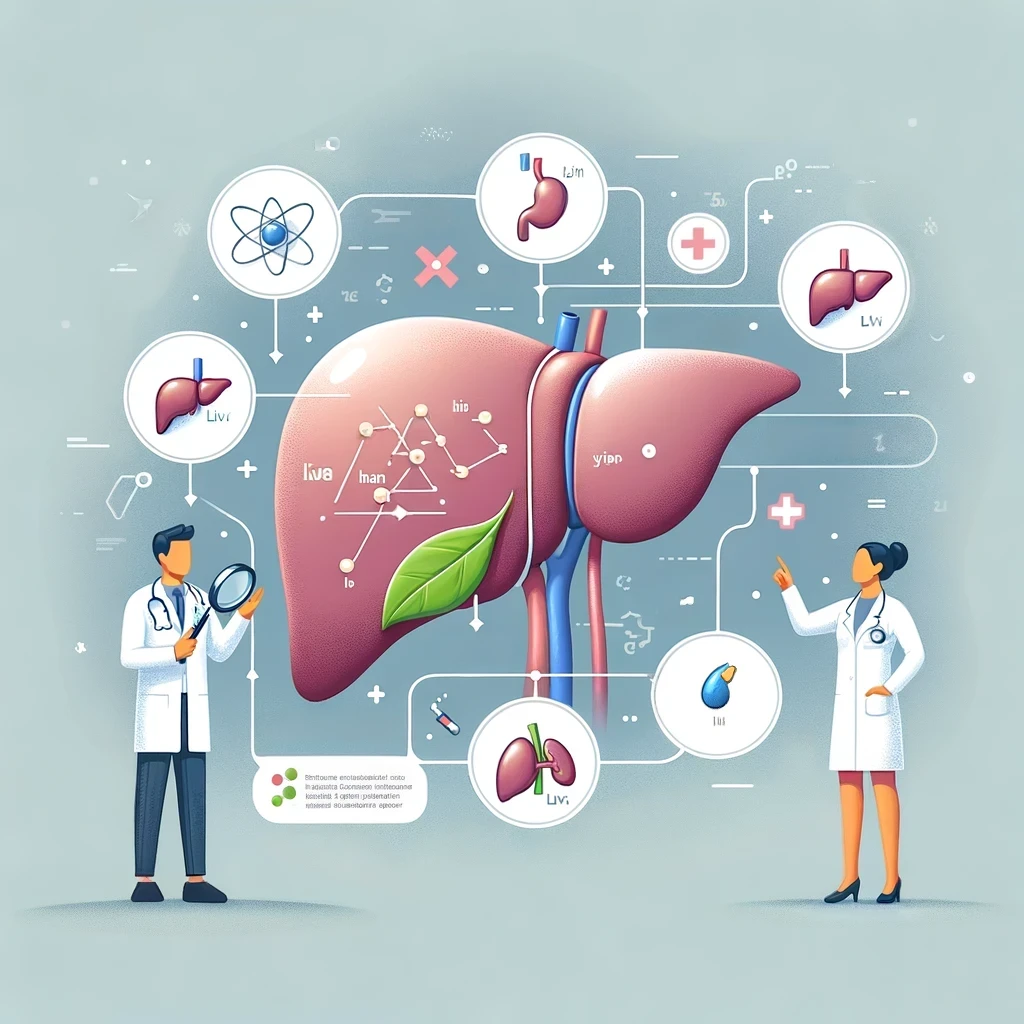2. What Is Liver Made Up Of?
The liver is divided into four lobes: the larger right and left lobes, as well as the smaller caudate and quadrate lobes. The falciform (“sickle-shaped” in Latin) ligament, which connects the liver to the abdominal wall, divides the left and right lobes. The lobes of the liver are further subdivided into eight segments, each of which contains thousands of lobules (small lobes). Each of these lobules has a duct that leads to the common hepatic duct, which drains bile from the liver.
A common hepatic duct is a tube that transports bile from the liver. It is formed by the joining of the right and left hepatic ducts.
The falciform ligament is a thin, fibrous ligament that connects the liver’s two lobes to the abdominal wall and serves as a dividing line between the liver and the spleen.
Glisson’s Capsule refers to the layer of loose connective tissue that encases the liver and its associated blood vessels and bile ducts.
The term “hepatic artery” refers to the primary artery responsible for transporting oxygenated blood to the liver.
The blood vessel that transports blood from the gastrointestinal tract, gallbladder, pancreas, and spleen to the liver is known as the hepatic portal vein.
The liver’s anatomical sections are known as lobes.
Lobules are microscopic liver building blocks.
The peritoneum is a membrane that forms the exterior of the liver.
3. What Are The Significant Functions Of Liver?
The liver is a vital organ that performs over 500 vital functions in the body. These include the removal of waste and foreign substances from the bloodstream, the regulation of blood sugar levels, and the production of essential nutrients. Some of its most important functions are as follows:
Production of Albumin: Albumin is a protein that prevents blood fluids from leaking into surrounding tissue. It is also responsible for transporting hormones, vitamins, and enzymes throughout the body.
Production of Bile: Bile is a fluid that is necessary for fat digestion and absorption in the small intestine.
Purifies the Blood: The liver filters all blood that leaves the stomach and intestines, removing toxins, byproducts, and other potentially harmful substances.
Amino acid Regulation: Amino acids are required for protein synthesis. The liver maintains healthy amino acid levels in the bloodstream.
Controls Blood Clotting: Vitamin K is used to make blood clotting coagulants, which can only be absorbed with the help of bile, a fluid produced by the liver.
Infection Resistance: Infection resistance is achieved by producing immune factors and removing bacteria from the bloodstream.
LGlucose Processing: Excess glucose is converted into glycogen for storage (glycogen can later be converted back to glucose for energy), and glucose is balanced and produced as needed.
5. What Causes Liver Damage?
Different types of liver disease are caused by various factors. Liver disease can be caused by:
Viral infections: Hepatitis A, B, and C are viral infections that cause diseases.
Immune system issues: When your immune system mistakenly attacks your liver, it can lead to autoimmune liver diseases. Primary biliary cholangitis and autoimmune hepatitis are two examples.
Inherited diseases: Some liver problems arise from a genetic condition (one you inherit from your parents). Inherited liver diseases include Wilson disease and hemochromatosis.
Cancer: It can develop when abnormal cells multiply in your liver. These tumors can be benign (noncancerous) or malignant (cancerous) (liver cancer).
Excessive consumption of toxins: The use of alcohol causes alcoholic fatty liver disease. Fat consumption causes non-alcohol related fatty liver disease (NAFLD). NAFLD is becoming more common as obesity and diabetes rates rise.
6. How Does One Maintain A Healthy Liver?
Follow these guidelines to keep your liver healthy and functioning properly:
Avoid toxins, including chemicals, tobacco, and illegal drugs.
Share no needles, razors, toothbrushes, or other personal items that could spread viruses.
Consume alcohol in moderation.
Follow medication instructions from your doctor, especially any warnings about mixing medications and alcohol.
Maintain a healthy weight by eating a nutritious diet and exercising on a regular basis.
To avoid hepatitis, engage in safe sex.
Consult your healthcare provider about hepatitis vaccinations.
Hands should be washed frequently.
